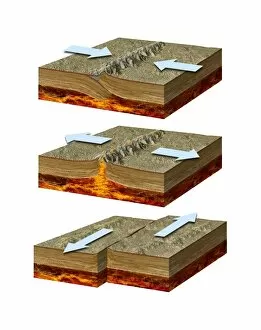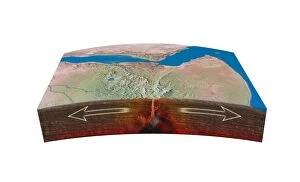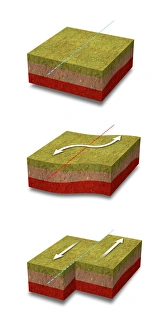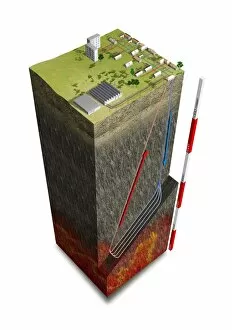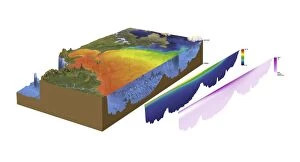Block Diagram Collection
A block diagram is a powerful visual tool that helps us understand complex systems and processes
All Professionally Made to Order for Quick Shipping
A block diagram is a powerful visual tool that helps us understand complex systems and processes. One such system is the tectonic plate boundary types, which can be beautifully depicted in a detailed diagram. This diagram showcases the different types of plate boundaries, such as divergent, convergent, and transform boundaries. Another fascinating aspect of Earth's structure can be explored through artwork depicting its internal layers. From the solid inner core to the liquid outer core, mantle, and crust, this artwork provides an insightful glimpse into our planet's composition. The Caribbean plate tectonics also come alive in stunning artwork showcasing the movement and interaction of plates in this region. The collision between the North American Plate and Caribbean Plate creates a unique geological landscape with volcanic activity and seismic events. Similarly, artwork illustrating East African Rift tectonics captures the gradual splitting of continental crusts over millions of years. This process leads to dramatic landscapes like deep valleys and elongated lakes. Earthquake movements are another captivating subject that can be represented through intricate artwork. These visuals bring to life how energy builds up along fault lines before being released in seismic waves that shake our planet's surface. In one striking piece of artistry, an earthquake triggers a tsunami – a devastating natural phenomenon caused by underwater disturbances. This depiction serves as a reminder of nature's immense power and its potential for destruction. On a more positive note, geothermal district heating is showcased through vibrant artwork demonstrating how heat from Earth's interior can be harnessed for sustainable energy solutions. This innovative approach benefits communities by providing clean heating options while reducing carbon emissions. For those interested in oceanography data or bathymetry models, block diagrams offer valuable insights into various regions' topography – like the north-western Atlantic – allowing scientists to study underwater features with precision. Lastly, let us not forget about Earth's atmosphere. Diagrams displaying its layers help us comprehend how gases envelop our planet while protecting and regulating its climate.

